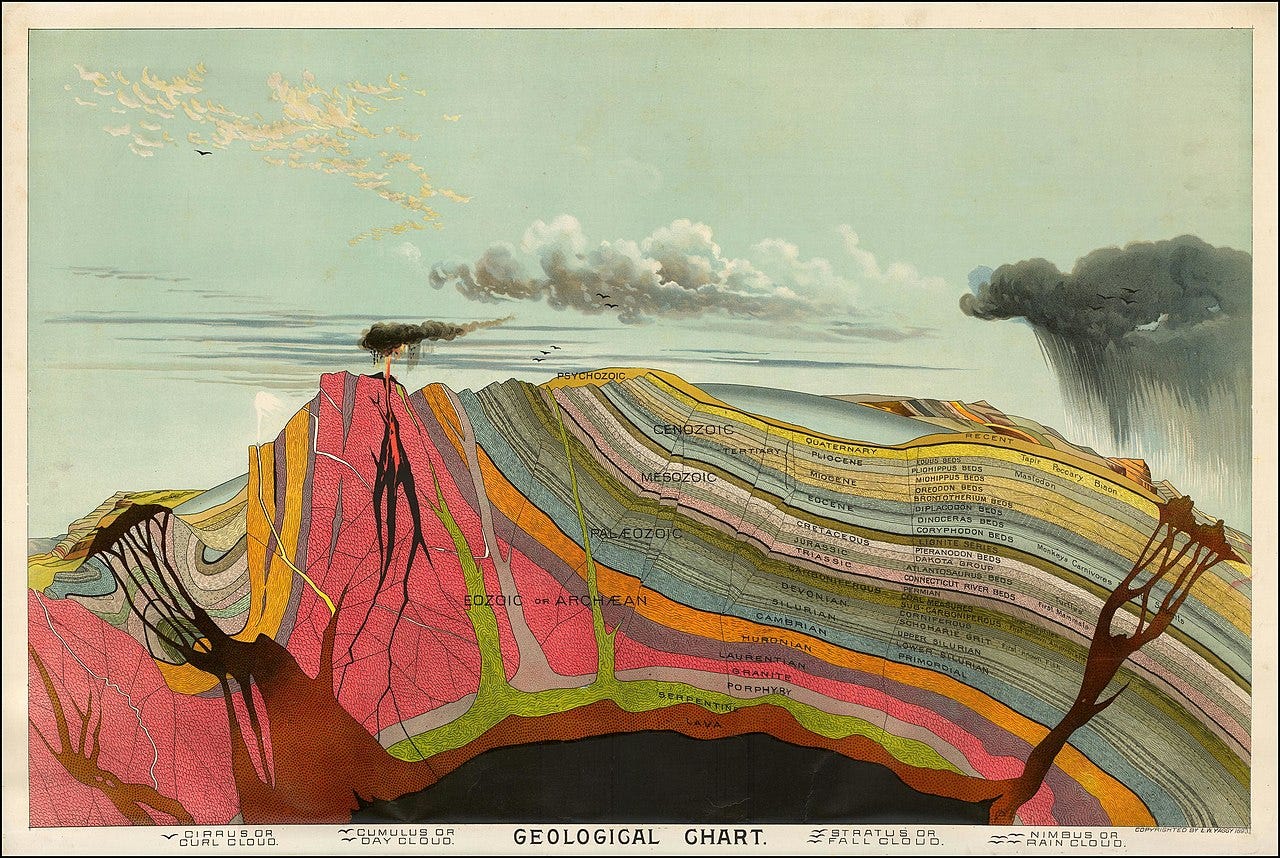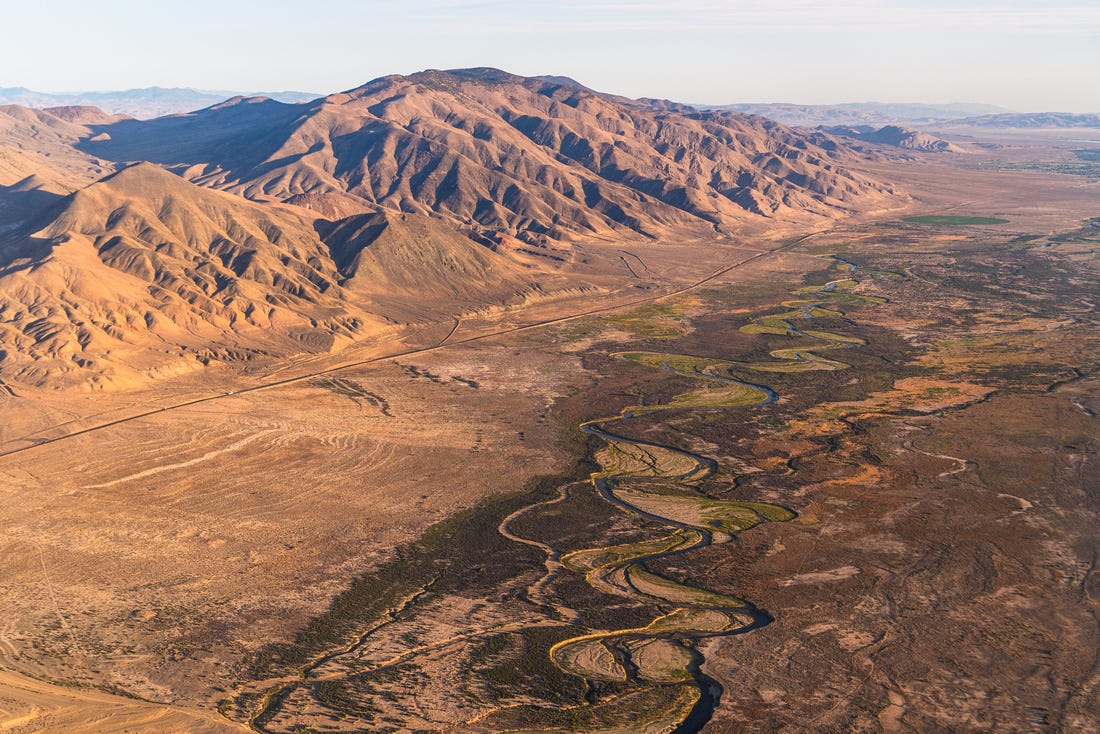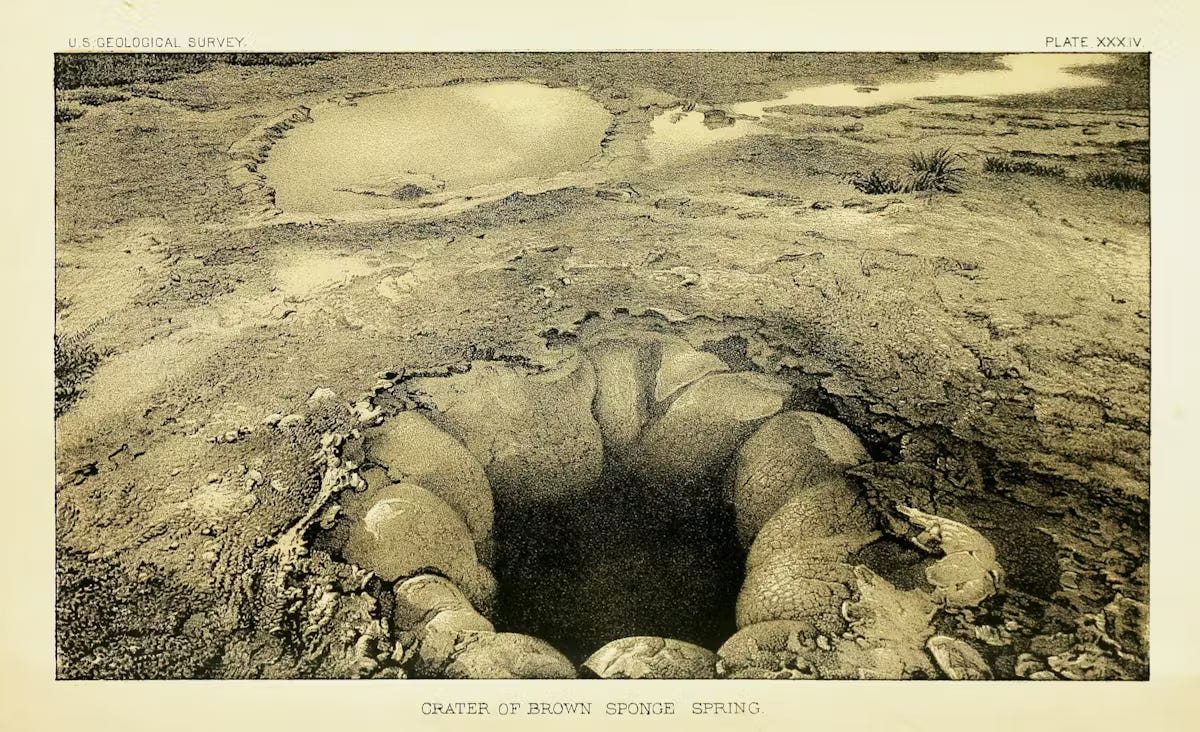When I started this newsletter two years ago, it was a place for me to share research and dispatches about water. I called the newsletter Western Water Notes, largely out of haste. I thought it was a simple and literal (albeit not very creative) name. While it generally described what I wrote about, it never fully captured why I wrote.
As I’ve engaged more with the newsletter and thought about what is next for it, I’ve decided to change the name from Western Water Notes to INVISIBLE WATERS.
A major reason I write about water is to make it more visible.
Water is uniquely tethered to place. Water supports interconnected ecologies, and its use is governed through layers of complex social and political systems: laws, norms, traditions, information, and negotiation. Communities in some of the world’s driest regions depend on scarce and variable water supplies. And how this water is allocated, used, and overused comes down to choices made in the past, which reverberate into the present, through infrastructure, legal frameworks, and water rights.
Some of this we see, but much of it we don’t when we turn the tap or get produce. It’s become apparent, with things like the data-center boom, how invisible water is stitched into our lives. Our points of use are often distanced physically and socially from their sources, as are the costs and consequences of pumping, diverting, and moving water.
This is especially true with groundwater. The “invisible” water source.
As a journalist in Nevada, I became so fascinated by groundwater that after my first interview at the USGS in Carson City, a source lent me a copy of the classic textbook on the subject by Allan Freeze and John Cherry. It’s simply titled Groundwater.
If surface water systems lack visibility, groundwater aquifers are particularly covert, as the Ohio Supreme Court infamously concluded in 1861, deciding in Frazier v. Brown that subsurface flows were too “secret, occult, and concealed” to manage. That court case was overturned in 1984, with the justices recognizing “a primary goal of water law should be that the legal system conforms to hydrologic fact.”
Despite its invisibility, groundwater is a critical supply, especially in arid regions. At often alarming rates, aquifers have declined because we are withdrawing water faster than it can be replenished. It’s an issue that affects communities that depend on this water and the environment. Groundwater plays a rich ecological role, supporting local biodiversity and sustaining wetlands, springs, and streamflow.
No longer considered “secret, occult, and concealed,” managing groundwater has become a central focus in the West and arid regions. The good news is that there are solutions and strategies to mitigate its rapid depletion, work toward aquifer recovery, and adapt to a future that takes a more balanced approach to groundwater pumping. But it also requires an honest assessment of where we are and how we got here.
Researchers have paid a lot of attention to surface water reclamation: the legacy of dams and diversions. This work is vital. But it is important to understand the history of groundwater development, even if its invisibility presents challenges for studying it. All water is connected, even the subsurface water we cannot always see.
Other than the name, not much will change. I’ll continue focusing on water in the Western U.S. and arid places, how we got to this point, and what the future looks like — the stories that are so often hidden to us when we use and consume water.
All to say, I am planning to dig deeper, so to speak, on INVISIBLE WATERS.
Going forward, and a note to paid subscribers
First, I’m deeply grateful to those who have subscribed and stuck with me since the beginning. Substack has been an experiment. You have made this work possible and have made investing the time worthwhile. Thank you.
My goal was to keep all of my posts free, but the reality is it’s not a sustainable model in order to keep the newsletter going for the long term. I also want to provide my paid subscribers with more value. With making the name change I mentioned above, I’m making a few other changes to my Substack.
You’ll notice that more of my posts (though not all) will start going behind a paywall. As a paid subscriber, for the cost of one coffee per month, you will get access to all archives from the publication, exclusive posts, and other bonuses. Most importantly, your subscription will go toward supporting this work and ensuring that much of my content remains free for those who can’t afford a subscription.
I am also looking to make the most of this platform. If you are a writer and have any tips or ideas to collaborate, let’s talk! I’m interested in using the video feature as a way to share interviews, cross-posting, and other tools Substack has to offer.
Please email me at danielrothbergwrites@gmail.com if you have any questions.
Book writing on scarcity, aridity, and change
As some of you know, for the past few years, I’ve been working with Island Press on a book about water scarcity in the Great Basin, with a particular focus on Nevada.
The book traces the development of water in the region, highlighting how there came to be more legal rights to use water than there was water to go around. It looks at the consequences of over-allocating water, and ultimately, the growing recognition of the need to use less and find a balance between withdrawals and actual supply. How that balance is achieved, within the boundaries and context of existing law, infrastructure, and social values, is a topic I hope resonates broadly.
More than anything else, though, I hope to tell a story about a unique, stunning, and resilient place, where water flows not into the ocean but into salt lakes (Pyramid Lake, Walker Lake, the Great Salt Lake, and many more). It’s a place where water is so vital and so scarce that coalitions form that transcend red vs. blue politics. It’s a place of ecosystem loss, and still a place where recovery can happen.
There’s a lot more to say, but I don’t want to spoil anything more for now…
Since it’s been a while since I’ve offered an update, I wanted to use this post for that, too. Working on a book has been unlike any project I’ve ever taken on. At times, it has been deeply fulfilling; I’ve had moments where I’ve entered a “flow state” where time collapses. And often it’s been a hard process full of learning, with ups and downs.
Since last year, I’ve put many more words (in the order of tens of thousands) onto paper into my computer. I’m currently refining what I’ve drafted, with a few chapters to go. There’s a lot of work ahead, but I’m continuing to write. Will keep you updated on my Substack.
In other writing news, I have a few other assignments coming soon, including a piece for KNPR and The Daily Yonder on Nevada’s groundwater retirement program.
Staying grounded: What are you watching, reading?
These are tumultuous times on many fronts. I’ve found it’s important to stay engaged, and it is important to take breaks and find enjoyment in the world.
One of the places I go when I need to disconnect to reconnect is to art, history, music, and books. I’m always looking for recommendations, so I wanted to crowdsource this in the best tradition of the pre-AI Internet. Where are you finding inspiration these days? What is keeping you afloat in a world that feels ever more uncertain? Answer however you like, and if you feel comfortable, please share in the comments.





I like the name change, it feels pertinent.
Thank you for your continued efforts to share water notes. I am fearful the knowledge and research side of things is drying up with a change in financial support, even as everyone should think about their water.
So many exciting updates here! Love the name change and book developments — and that Yaggy chart absolutely slaps. So cool.
I just finished Sisters In Law by Linda Hirshman and it was excellent. I’m now revisiting The Solace of Open Spaces by Gretel Erlich, which is gentle and lovely.